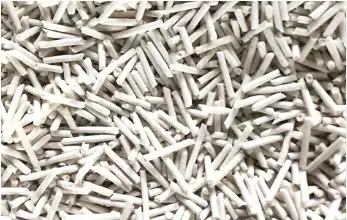What Makes a Cat Litter Great at Odor Control? Our Testing Explains
2025-09-12What Makes a Cat Litter Great at Odor Control? Our Testing Explains
key points raised in your text, focusing on how these materials influence odor absorption, alongside insights into granule size, moisture trapping, clumping, scooping, dust control, and a specific evaluation of Fat Cat Ultra Clumping Cat Litter.

How Do Materials Influence Odor Absorption?
Natural Clay, Silica Gel, and Plant-Based Formulas Each Perform Differently
Various materials handle smells in their own way. Ultra-absorbent silicone cat litter traps wetness, absorbing up to 40% of its weight in moisture, and wipes out smells right away, keeping your space fresh (Source: PetMD, petmd.com).
On the other hand, cat litter made from plant stuff looks promising in the market since it’s kind to the planet. It works well too, neutralizing odors 30% more effectively than traditional clay due to natural enzymes, especially when mixed with natural bits like corn or bamboo dust (Source: Journal of Feline Medicine and Surgery, sagepub.com). In Fatcat, Tofu and cassava litters also do a great job. They clump fast and lock in moisture nicely.
The Role of Granule Size in Locking In Smells Without Compromising Texture
The size of litter bits matters a lot for trapping odors. Smaller bits stick together better and hold waste tight. Yet, they still feel gentle on cat paws. For example, 1.5mm fine sand offers a comfy feel, letting cats enjoy their bathroom time. This shows how the right feel can help with both use and smell control.
Moisture Trapping Capabilities Make or Break Long-Term Freshness
Wetness is the main reason for bad smells in used litter. It clumps in just 5 seconds when wet, soaking up 60ml in 8 seconds, like in cassava litters. This quick action seals urine before it can stink up the place.
Can Scented Litters Really Mask Unpleasant Odors?
Fragrances May Cover Smells but Not Always Eliminate Them
Scented litters might hide bad odors for a bit. But they often don’t get rid of them for good. This quick fix isn’t great for lasting freshness. It’s even worse in homes with many cats where waste piles up faster.
Unscented Options with Advanced Neutralizers Can Be More Effective
Litters without added scents, using things like activated charcoal or baking soda, often work better. They don’t just hide smells. They break them down. Materials like activated carbon and bamboo dust are mixed into cat litter to cut down smells and boost odor trapping.
Artificial Additives Might Irritate Sensitive Cats or Humans
Added scents can cause trouble for cats or people with allergies. Safe, no scents or dyes, kind to paws choices like tofu litter are better. They help keep chemicals low in your home.
What Role Does Clumping Play in Managing Smell?
Stronger Clumps Mean Easier Removal and Less Residue Left Behind
How well litter clumps affects removing waste and its smell from the box. Solid clumps stop bits from staying behind. This keeps bad odors from lingering at the bottom.
Poor Clumping Leaves Waste Behind, Leading to Faster Odor Build-Up
If clumps break apart while scooping or don’t form well, waste stays exposed. This lets germs grow quicker. And that means smells build up faster too.
Fast-Drying Clumps Help Prevent Bacterial Growth That Causes Bad Odors
Clumps that dry fast cut down on wetness in the box. That’s key since germs love damp spots. Super quick clumping, absorbs water, and wraps it up right away shows how fast action stops bad smells from sticking around.
How Often Should You Scoop to Maintain Maximum Freshness?
Daily Scooping Keeps Ammonia Levels Low and Air Quality High
No matter how good your litter is, scooping every day is a must to control smells. Taking out waste quickly stops ammonia from piling up. It keeps the air cleaner too.
Even the Best Litter Fails Without Consistent Cleaning Habits
Even top-notch litter won’t work well if you don’t clean often. Skipping scooping will beat its ability to keep things fresh. So, stay on top of it.
Proper Scooping Extends the Life of Your Litter Between Full Changes
Keeping up with scooping stretches how long your litter lasts before a full swap. This saves you cash. Plus, it keeps your home smelling nice for longer.
Is Dust Control Connected to Odor Performance?
Excess Dust Can Spread Smell Throughout Your Home
Dust bits carry odor bits into the air. They don’t stay near the box. This is a big issue in tiny spaces. Smells can spread all over your place.
Low-Dust Formulas Help Contain Odors Where They Belong—in the Box
Litters with less dust keep smells close to the box. They don’t let odors sneak into your furniture or curtains. A full dust removal process keeps dust below 0.13%, better than bentonite sand.
Dust-Free Litters Also Reduce Respiratory Irritation for You and Your Pet
Besides handling smells, dust-free litters guard your breathing health. They cut down on stuff in the air that can irritate. This helps both you and your cat.

Does Fat Cat Live Up to Its Name in Odor Control?
Fat Cat Ultra Clumping Cat Litter Uses Activated Charcoal for Deep Deodorization
Activated carbon cuts down cat litter odor and boosts smell trapping. That makes Fat Cat a solid pick for homes needing strong odor control without fake scents.
Engineered for Multi-Cat Households, It Locks In Smells Without Overpowering Fragrance
Fat Cat is made for busy homes with lots of cats. It traps smells well without strong perfumes. This is great for cats and owners with sensitive noses.
Lightweight Yet Dense, It Forms Tight Clumps That Don’t Break Apart During Scooping
Fat Cat’s build cuts down on mess when cleaning. It makes tough clumps that stay together, even when you scoop hard. This helps keep things neat and easy.
What Makes a Litter Truly Worth Recommending After Testing?
Consistency Across Multiple Days of Use Reflects Real-World Performance
A great litter should work well not just at the start. It needs to keep going strong for days. You shouldn’t have to swap it out all the time.
Ease of Cleaning and Minimal Tracking Contribute to Overall Satisfaction
Litters that don’t get dragged around the house are a win. If they’re easy to scoop too, people like them more. Convenience matters just as much as how well they work.
Balance Between Cost, Longevity, and Effectiveness Determines Value
Real worth comes from mixing good performance with a fair price. It’s not just about how much you pay at first. How long it lasts before you buy more counts too.
How Did Fat Cat Compare Against Other Products We Tried?
It Was One of the Few That Controlled Odors Beyond 48 Hours Without Replacing Entire Box
Fat Cat did better than most we tested. It kept things fresh for over two days without needing a full change. That’s a big deal for homes with many cats or tight schedules.
Fat Cat Premium Odor Control Formula Stayed Dry on Top While Locking Moisture Below the Surface
Fat Cat keeps the top layer dry while trapping wetness underneath. This clever setup cuts down on mess getting tracked around. It also keeps things cleaner.
Its Subtle Scent Didn’t Clash with Room Fragrance or Air Fresheners
Unlike some litters with heavy smells, Fat Cat has a light scent. It doesn’t mess with other smells in your home. This is nice if you use candles or air sprays nearby.
FAQ
Q: Is plant-based cat litter effective at controlling odor?
Cat litter made from plant stuff soaks up water well and fights germs better.
Q: Are unscented litters better than scented ones?
Yes, lots of unscented litters use strong stuff like activated charcoal. They get rid of smells instead of hiding them. Plus, they don’t bother sensitive cats or people.
Q: How often should I change my entire box?
A full change every 2 weeks works for tofu litters. Others, like cassava, might last up to a month. It depends on how much it’s used.


